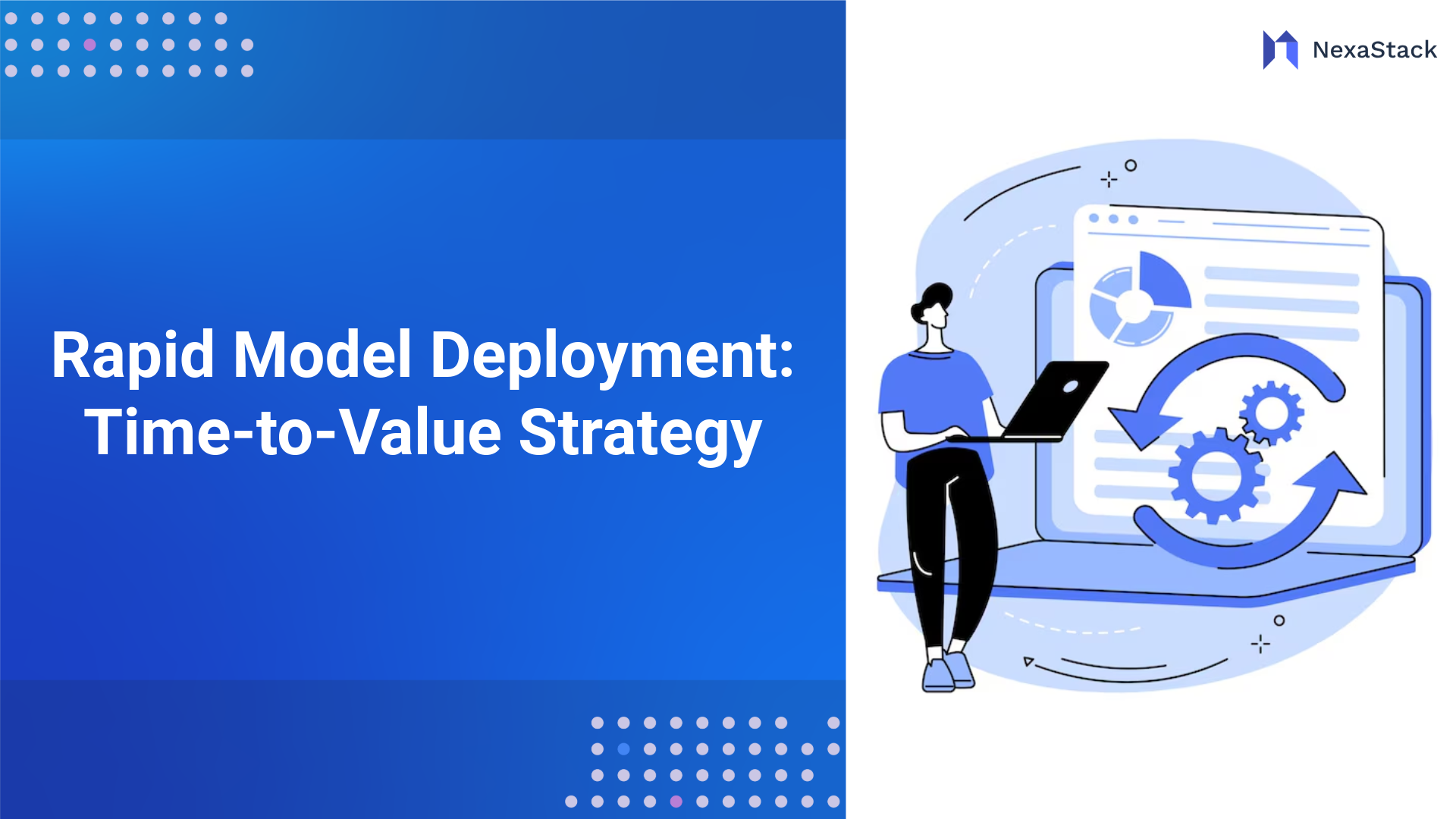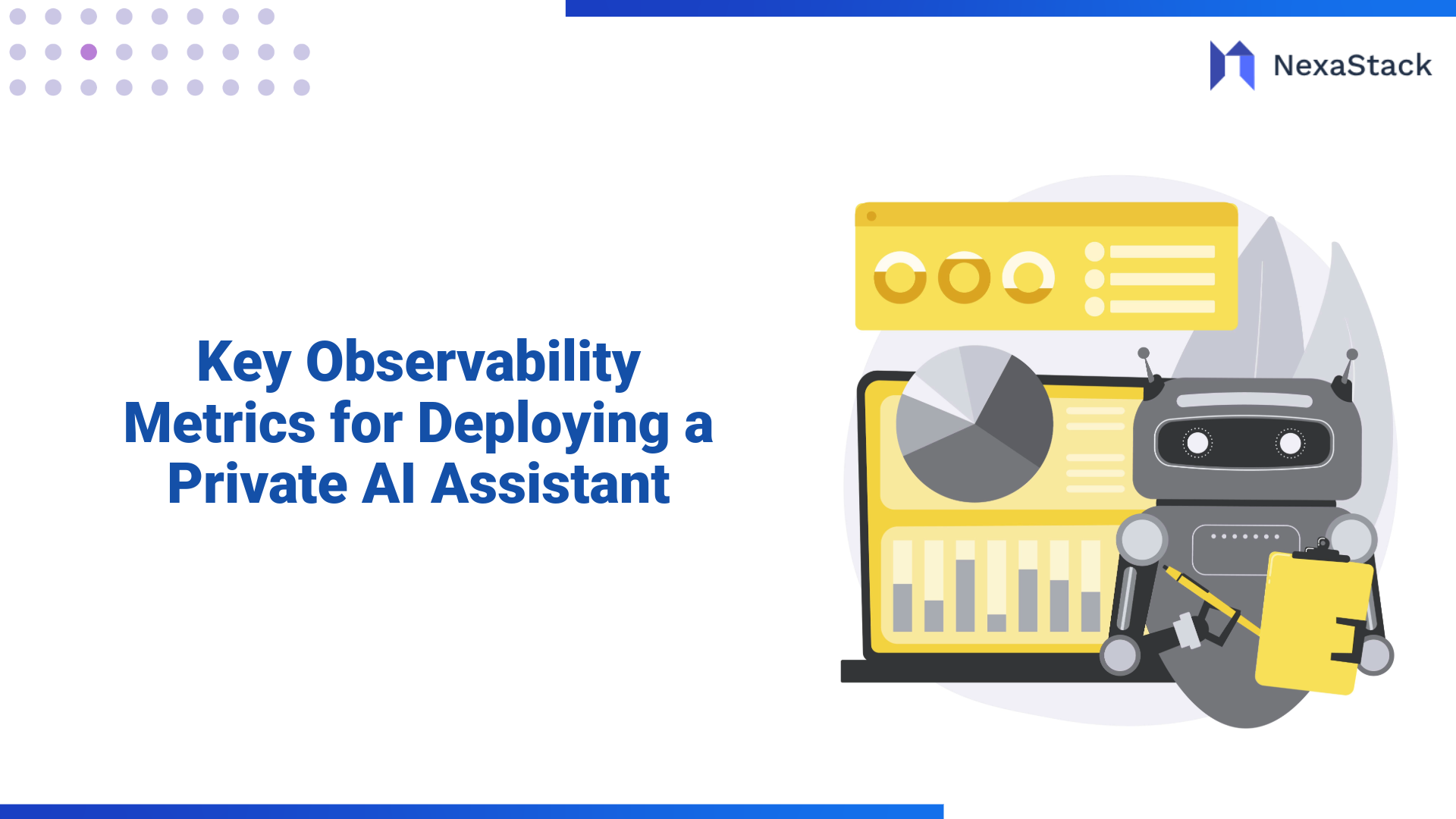Deploying a high-performance sentence embedding service is essential for modern AI applications such as intelligent search, semantic matching, personalised recommendations, and conversational agents. As enterprises scale their natural language processing (NLP) capabilities, leveraging efficient sentence embeddings becomes critical for delivering contextual understanding and relevance.
In this blog, we explore how to build and deploy a sentence embedding service using NexaStack, a fully managed platform for LLMOps and AI infrastructure automation. NexaStack enables fast, secure, and scalable deployment of transformer-based models like Sentence-BERT and MiniLM—whether running in your private cloud, hybrid environment, or multi-cloud architecture.
You’ll learn to select the correct sentence embedding model, set up the embedding server, and streamline API integration using Nexa SDK. The platform abstracts complex DevOps processes with built-in orchestration, GPU optimisation, and model monitoring—empowering teams to operationalise NLP pipelines without worrying about infrastructure management.
With enterprise-grade deployment support and native model observability, NexaStack helps reduce time to value while ensuring performance, compliance, and scalability. Whether you’re enabling semantic search or enhancing AI assistants, this guide will walk you through a production-ready blueprint for easily delivering real-time, embedding-as-a-service.
Let’s dive into how NexaStack accelerates the journey from model selection to live inference, turning your NLP models into intelligent, scalable microservices.
Key Insights
Deploying a sentence embedding service with NexaStack ensures performance, scalability, and easy integration into NLP workflows.
Model Choice
Select fast, accurate models like Sentence-BERT for your use case.
Easy Deployment
Automate model serving with NexaStack’s managed infrastructure.
API Integration
Serve embeddings via secure, scalable REST/gRPC APIs.
Built-in Monitoring
Track performance and ensure consistent embedding quality in production.
Sentence Embeddings Basics
Before building the service, it’s essential to understand what sentence embeddings are and why they are used.
-
Purpose: Convert sentences into numerical vectors that encode meaning.
-
Example: “Today is sunny” and “The weather is pleasant” will have similar embeddings.
-
Applications:
-
Semantic search
-
Duplicate detection
-
Topic clustering
-
Recommendation systems
Popular pre-trained models for generating embeddings include Sentence-BERT and the Universal Sentence Encoder, both accessible via repositories like Hugging Face.
NexaStack & Nexa SDK Overview
NexaStack has two main offerings:
-
Infrastructure as Code platform, primarily for DevOps and cloud automation.
-
AI Inference Platform (NexaStack AI), which this guide focuses on.
Nexa SDK is the primary toolkit that supports:
-
GGUF and ONNX model formats
-
Text generation
-
Image and audio processing
-
Sentence embedding
-
OpenAI-compatible APIs for seamless integration
Developers can run the service locally or explore NexaStack’s cloud capabilities for scaling.
Choosing an Embedding Model
Choosing the right model is critical for performance. Here are the recommended options:
|
Model Name |
Format |
Highlights |
|
Sentence-BERT |
ONNX |
High accuracy for semantic similarity |
|
Universal Sentence Encoder |
TensorFlow/ONNX |
General-purpose embeddings |
|
mxbai-embed-large-q4_0.gguf |
GGUF |
Efficient, quantized for faster inference |
This guide will use mxbai-embed-large-q4_0.gguf, a quantized GGUF model that balances speed and quality.
Installing Nexa SDK
Installation of Nexa SDK is straightforward. Use pip to install:
pip install nexaai
Nexa SDK supports:
-
CPU-only environments
-
GPU acceleration (CUDA, Metal, ROCm)
-
Vulkan backend (for specific GPU configurations)
For CUDA-enabled Linux systems, install with:
CMAKE_ARGS="-DGGML_CUDA=ON" pip install nexaai --prefer-binary \
--index-url https://github.nexa.ai/whl/cu124 \
--extra-index-url https://pypi.org/simple --no-cache-dir
This ensures optimal performance on NVIDIA GPUs.
Preparing and Loading the Model
Make sure your model is downloaded or converted to a supported format. GGUF and ONNX are recommended. You can either:
-
Download pre-converted models from the Nexa Model Hub.
-
Convert models yourself with the Nexa CLI:
nexa convert /path/to/original-model /output/path/model.gguf
For this guide, assume the model file is saved here:
/home/ubuntu/models/mxbai-embed-large-q4_0.gguf
Starting the Embedding Server
Once the model is ready, start the server to expose the embedding API:
nexa server /home/ubuntu/models/mxbai-embed-large-q4_0.gguf -mt EMBEDDING -lp
Explanation:
-
-mt EMBEDDING: Model Type = Embedding
-
-lp: Indicates the model is on a local path
This launches a FastAPI server on localhost:8000.
Using the Embedding Service
With the server running, you can generate embeddings by sending POST requests to the /v1/embeddings endpoint.
Example Request:
curl -X POST http://localhost:8000/v1/embeddings \
-H 'Content-Type: application/json' \
-d '{"input": "I love Nexa AI.", "normalize": false, "truncate": true}'
Example Response:
{
"object": "embedding",
"data": [
{
"embedding": [0.023, -0.017, ...],
"index": 0
}
],
"model": "mxbai-embed-large-q4_0.gguf",
"usage": {
"prompt_tokens": 5,
"total_tokens": 5
}
}
Batch Requests:
You can send multiple sentences in one request to improve throughput:
{
"input": ["First sentence.", "Second sentence."],
"normalize": true
}
Best Practices for Deployment
To ensure production readiness:
-
Batch Input: Group sentences to reduce latency.
-
GPU Acceleration: Use CUDA or Metal backends.
-
Monitoring: Leverage Nexa eval to benchmark performance.
-
Scaling: Consider containerization with Docker and Kubernetes.
-
Security: Use HTTPS endpoints and restrict access with API keys.
For teams planning to serve embeddings at scale, NexaStack offers deployment pipelines that integrate with cloud providers, though specifics may vary.
Additional Capabilities
While this guide focuses on sentence embeddings, Nexa SDK also supports:
-
Text Generation: Similar to OpenAI’s GPT endpoints.
-
Image Embeddings: For multimodal search.
-
Audio Processing: For speech embeddings.
This versatility means you can unify multiple inference workloads within one Nexa server.
Tables for Quick Reference
Deployment Methods:
|
Method |
Details |
Example Command |
|
Executable Installer |
For Windows/macOS/Linux |
macOS: Installer Package |
|
Python Package |
CPU & GPU support (CUDA/Metal/ROCm/Vulkan) |
pip install nexaai |
|
Local Build |
Clone repo and build locally |
git clone --recursive ...; pip install -e . |
API Endpoints:
|
Endpoint |
Purpose |
Input Example |
Output Fields |
|
/v1/embeddings |
Generate sentence embeddings |
{ "input": "I love Nexa AI." } |
object, data, model, usage |
Summary & Key Takeaways
Deploying a sentence embedding service with NexaStack is efficient and scalable. By combining a pre-trained embedding model and Nexa SDK’s flexible server, you can quickly create APIs for semantic search, clustering, and more.
Whether you are prototyping locally or planning a large-scale deployment, NexaStack provides the tools to streamline inference and integrate easily with existing systems.
Explore NexaStack’s multimodal features and GPU-accelerated configurations for advanced use cases to build more powerful AI applications.
Next Steps with NexaStack
Talk to our experts about implementing compound AI system, How Industries and different departments use Agentic Workflows and Decision Intelligence to Become Decision Centric. Utilizes AI to automate and optimize IT support and operations, improving efficiency and responsiveness.



